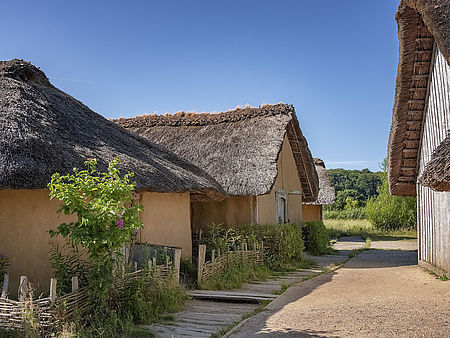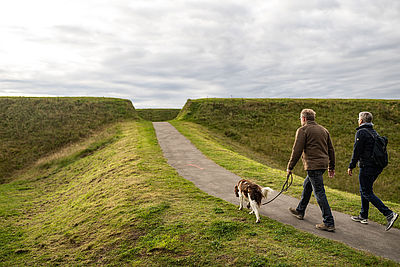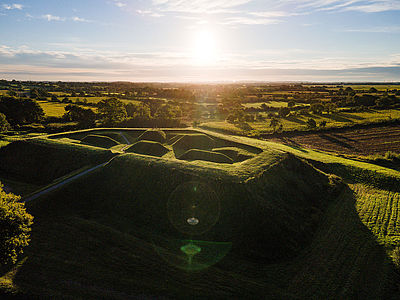
UNESCO World Cultural Heritage Haithabu and Danewerk
The important Viking settlement of Haithabu and the Danewerk border fortification system on the Schlei, which is at least a thousand years old, have also been designated UNESCO World Heritage Sites.

The settlement of Haithabu on the Schlei was a very influential trading centre in northern Europe from the 9th to the middle of the 11th century. The “Ochsenweg” or “Ox Trail”, which ran there as an important trade route, made Haithabu an important traffic hub and a meeting place for traders from all over the then known world.
Many craftsmen of exclusive products, such as gold jewellery or pearls, settled permanently and developed the place into a flourishing metropolis.
You can allow yourself to be transported back to the colourful hustle and bustle of the Vikings 1000 years ago. Marvel at the reconstruction of the imposing wooden houses in the outdoor area and the numerous artefacts found here in the Viking Museum Haithabu.

Towards the land, Haithabu was protected by a high semicircular wall, to which the Danewerk was connected as the border fortification of the Danish kings to the south.
The Danewerk consisted of earth ramparts, ditches and masonry, as well as a barrage in the Schlei. More than 25 kilometres of the rampart are still preserved today. Large areas are under nature conservation and have particularly diverse flora and fauna. At Danevirke Museum you can learn more about the border wall and German-Danish history.
Follow in the footsteps of the Vikings with the whole family. For more information about the World Heritage Site and tips for your excursion programme, please contact Ostseefjord Schlei GmbH in Schleswig.